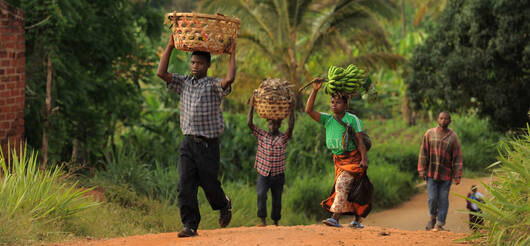Viet Nam government decision on allocation of forest land to organizations, households, and individuals for long-term forestry purposes
10 September 2015
10 September 2015
According to the provisions of this Decision, the following forest land shall be allocated to organizations, households and individuals: (a) land which has natural or planted forest; (b) land which does not have forest but should be afforested through planting, assisted natural regeneration, or protection of the vegetation. The allocation...
Forests, fields and markets: a study of indigenous tree products in the woody savannas of the Bassila region, Benin
09 September 2015
09 September 2015
This PhD thesis is a case study on indigenous tree products in the woody savannas of the Bassila region in Benin. It is available upon registration.
The importance of non-timber forest products in rural livelihood security and as safety nets: a review of evidence from South Africa
09 September 2015
09 September 2015
A recent South African work that examines the role and importance of non-timber forest products (NTFPs) in the daily lives of rural people in South Africa was reviewed in this paper. The most commonly used such products are wild spinaches, fuelwood, wooden utensils edible fruits, grass hand-brushes, and twig hand-brushes,...
Is non-timber forest product harvest sustainable in the less developed world? A systematic review of the recent economic and ecological literature
09 September 2015
09 September 2015
Non-timber forest products (NTFPs) provide material subsistence and cash income to millions of rural people, particularly in less developed countries. This paper offers a systematic review of recent trends (2000-2010) in the ecological and economic sustainability of NTFPs. Of 101 NTFP ecological studies, most addressed harvest consequences at the population-individual...
The development of food reserve forests through the civic mission operations of the armed forces of the Republic of Indonesia
09 September 2015
09 September 2015
This decree was made in order to consolidate food self-sufficiency and food diversification programmes in the framework of promoting national food resilience. For these reasons was deemed necessary to develop national food reserves. To implement the development of the said national food reserve forests, it was also necessary to establish...
Development policy guidelines on agriculture and food security, Finland
09 September 2015
09 September 2015
Food security has become one of the most important issues in international development policy. These guidelines set out the areas of operation in which Finnish expertise and resources can bring about sustainable results in improving food security and fostering agricultural development in developing countries.
The Community Forestry Program in Nepal is a global innovation in participatory environmental governance that encompasses well-defined policies, institutions, and practices. The program addresses the twin goals of forest conservation and poverty reduction. As more than 70 percent of Nepal’s population depends on agriculture for their livelihood, community management of...
Forest carbon and local livelihoods: assessment of opportunities and policy recommendations
09 September 2015
09 September 2015
Projects implemented as part of the Clean Development Mechanism (CDM) of the Kyoto Protocol will have the dual mandate of mitigating greenhouse gas emissions and contributing to sustainable development. Basic agreement on core elements was reached in 2001, including the decision to allow afforestation and reforestation projects. However, it is...
Forest products and household economy: a case study from Mudumalai Wildlife Sanctuary, Southern India
07 September 2015
07 September 2015
Traditional communities living at forest margins use forest resources in various ways. Understanding the resource-use patterns of such communities provides a basis for seeking the participation of such communities in forest conservation. The present study undertaken in the Mudumalai Wildlife Sanctuary and the adjoining Sigur Plateau in the state of...
Guiding principles for linking agriculture and nutrition: synthesis from 10 development institutions (Summary)
07 September 2015
07 September 2015
This synthesis aims to provide an updated and complete list of current guidance, institutional strategies, and other publications released by international development institutions and interagency UN bodies on maximizing nutrition impact through agriculture, and will provide an analysis of the key messages currently available. The purpose of this paper is...

